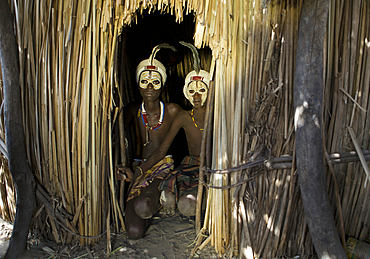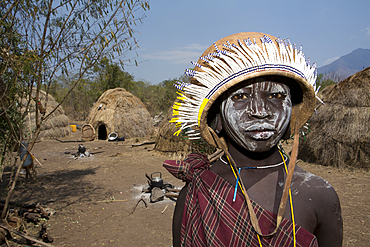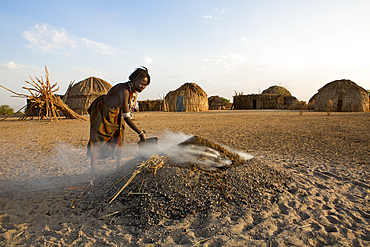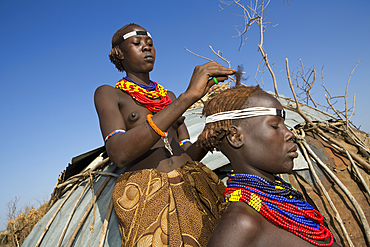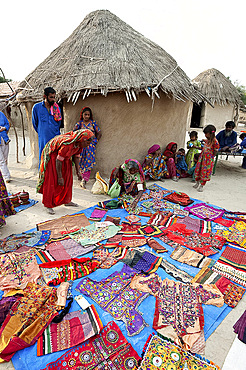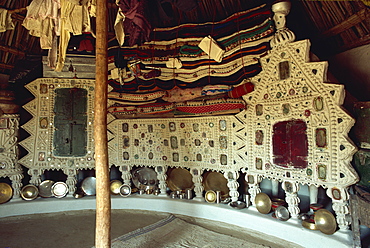Recent searches
Loading...
805-1469 - Tribal village women laying out their tribal embroidery outside mud walled houses in their tribal village, Kachchh, Gujarat, India, Asia
805-1468 - Two tribal village girls, one making traditional quilt using sewing machine in village house, Kachchh desert area, Gujarat, India, Asia
1184-7285 - Fireplace, Teke tribal village, Congo River, Democratic Republic of the Congo, Africa
805-245 - Mishing tribal village house, Majuli Island, largest freshwater riverine island in the world, in the Brahmaputra River, Assam, India, Asia
1116-44565 - Portrait of a senior woman from the Tanuu tribe, Taungyii, Shan State, Myanmar
805-1307 - Naga chief's house, heavily decorated with tribal headhunting images, Nagaland, India, Asia
805-1275 - Traditional Naga village house front, decorated with tribal head-hunting icons, Mao Maram, Manipur, India, Asia
805-1274 - Traditional Naga village house front, decorated with tribal head-hunting icons, Mao Maram, Manipur, India, Asia
796-1270 - Chief Shakes Tribal House, historic site, Wrangell, Southeast Alaska, United States of America, North America
805-954 - Pathan village women showing their traditional embroideries in front of mud and thatched tribal houses, Jarawali, Kutch, Gujarat, India, Asia
805-953 - Pathan village people, women showing their traditional embroideries in front of mud and thatched tribal houses, Jarawali, Kutch, Gujarat, India, Asia
805-749 - Apatani grandmother and child in Apatani tribal village street of traditional bamboo built houses, Ziro, Arunachal Pradesh, India, Asia
805-670 - Village Gurung (boys dormitory) decorated with carved wooden pillars and animal skulls, where tribal boys are trained to manhood, Ngangting, Nagaland, India, Asia
805-671 - Village Gurung (boys dormitory) decorated with carved wooden pillars and animal skulls, where tribal boys are trained to manhood, Ngangting, Nagaland, India, Asia
805-615 - Batak Toba tribal rural village houses with contemporary extensions on Samosir Island in Lake Toba, Sumatra, Indonesia, Southeast Asia, Asia
805-614 - Batak Toba tribal rural village houses on Samosir Island in Lake Toba, Sumatra, Indonesia, Southeast Asia, Asia
805-617 - Batak Toba village houses with high ended roof and tribal carvings, Tomuk, Samosir Island, Sumatra, Indonesia, Southeast Asia, Asia
831-1152 - Interior of Navajo hogan, traditional dwelling and ceremonial structure, Monument Valley Navajo Tribal Park, Utah, United States of America, North America
831-1153 - Navajo hogan, traditional dwelling and ceremonial structure, Monument Valley Navajo Tribal Park, Utah, United States of America, North America
1196-111 - The idea of the interconnectedness of all things is central to the tribal way of looking at the world. practical knowledge of the environment, of crops and medicines, of hunting and fishing, is a byproduct of it. the makuna believe that human beings, animals, and all of nature are parts of the same one. animals and fish live in their own communities, which are just like human communities, with their chiefs, their shamans, their dance houses, their songs, and their material possessions. when human peoples dance in this world, the shaman invites the animal people to dance in theirs. if humans do not dance and shamans do not offer spirit food to the animal people, the animals will die out and there will be no more game left in the world. for the makuna the radical disjunction so characteristic of western thought between nature and culture, men and animals, dissolves. eastern colombia amazon, vaupes region, population: 600
1195-76 - Hardest hit was a 650 kilometers stretch of the somali coastline between garacad (mudung region) and xaafuun (bari region), which forms part of the puntland province near the horn of africa. The tsunami resulted in the death of some 300 people and extensive destruction of shelters, houses and water sources as well as fishing gear. The livelihoods of many people residing in towns and small villages along the somali indian ocean coastline, particularly in the northern regions, were devastated
1195-73 - Hardest hit was a 650 kilometers stretch of the somali coastline between garacad (mudung region) and xaafuun (bari region), which forms part of the puntland province near the horn of africa. The tsunami resulted in the death of some 300 people and extensive destruction of shelters, houses and water sources as well as fishing gear. The livelihoods of many people residing in towns and small villages along the somali indian ocean coastline, particularly in the northern regions, were devastated
1195-75 - Hardest hit was a 650 kilometers stretch of the somali coastline between garacad (mudung region) and xaafuun (bari region), which forms part of the puntland province near the horn of africa. The tsunami resulted in the death of some 300 people and extensive destruction of shelters, houses and water sources as well as fishing gear. The livelihoods of many people residing in towns and small villages along the somali indian ocean coastline, particularly in the northern regions, were devastated
1194-1030 - Thailand ban mai samaki, a tribal village near chiang mai
1195-74 - Hardest hit was a 650 kilometers stretch of the somali coastline between garacad (mudung region) and xaafuun (bari region), which forms part of the puntland province near the horn of africa. The tsunami resulted in the death of some 300 people and extensive destruction of shelters, houses and water sources as well as fishing gear. The livelihoods of many people residing in towns and small villages along the somali indian ocean coastline, particularly in the northern regions, were devastated
1194-202 - Watatulu tribal child at home, tanzania. Mwankale
921-908 - Tribe members, bamboo weave, making crafts, Iban Long House comunity. Kuching, Sarawak, Borneo, Malaysia, South-East Asia, Asia
921-910 - Tribe members, bamboo weave, making crafts, Iban Long House comunity. Kuching, Sarawak, Borneo, Malaysia, South-East Asia, Asia
921-911 - Tribe members, bamboo weave, making crafts, Iban Long House comunity. Kuching, Sarawak, Borneo, Malaysia, South-East Asia, Asia
17-3383 - Rabari tribal interior, Kutch district, Gujarat state, India, Asia
17-3331 - Tribal huts of the Kutch district, Gujarat state, India, Asia
17-4248 - Raised mud reliefs inlaid with mirror on the walls of living area in modern home in traditional tribal Rabari round mud hut, Bunga style, near Ahmedabad, Gujarat state, India, Asia
17-4249 - Raised mud reliefs inlaid with mirror on the walls of dining area in modern home in traditional tribal Rabari round mud hut, Bunga style, near Ahmedabad, Gujarat state, India, Asia
17-4255 - Modern residential home in traditional tribal Rabari round mud hut, Bunga style. near Ahmedabad, Gujarat state, India, Asia
17-4256 - Raised mud reliefs inlaid with mirror on the walls in bedroom of modern home in traditional tribal Rabari round mud hut, Bunga style, near Ahmedabad, Gujarat state, India, Asia
17-4257 - Raised mud reliefs inlaid with mirror on the walls of modern home in traditional tribal Rabari round mud hut, Bunga style, near Ahmedabad, Gujarat state, India, Asia
17-4254 - Raised mud reliefs inlaid with mirror on the walls of modern home in traditional tribal Rabari round mud hut, Bunga style, near Ahmedabad, Gujarat state, India, Asia
You reached the end of search results





